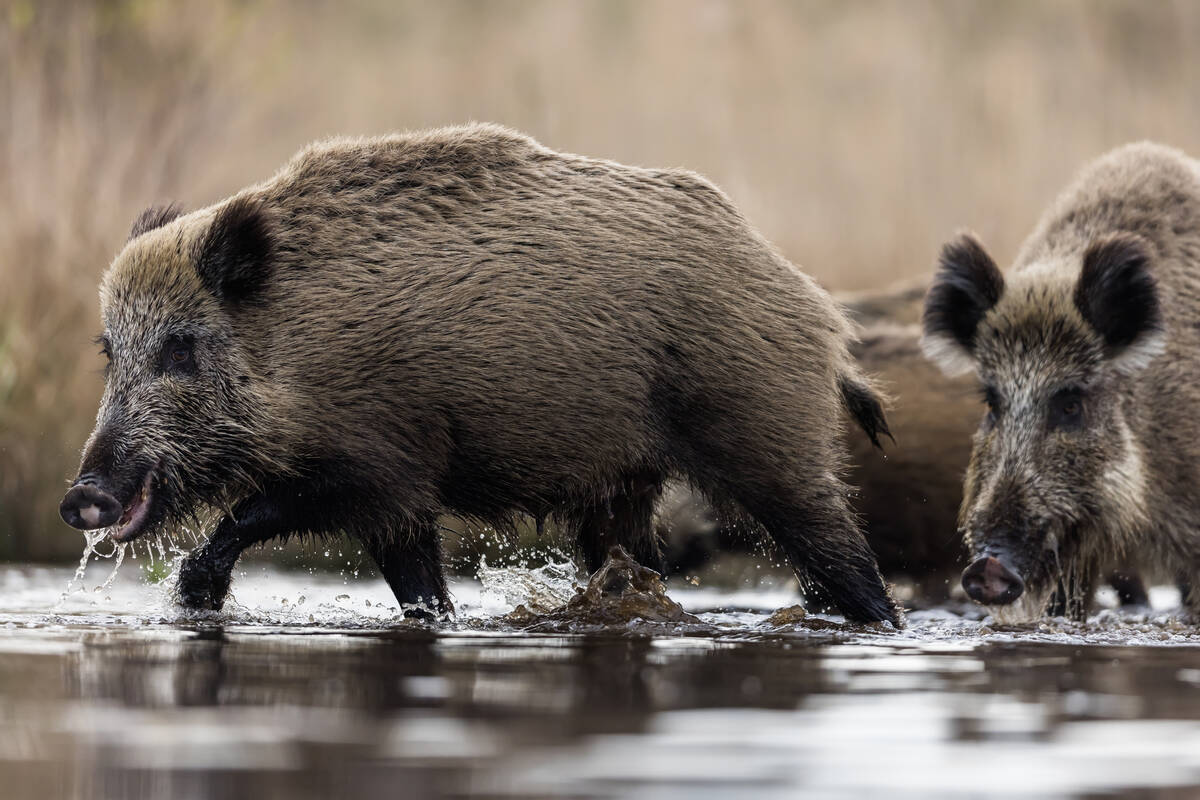PHOENIX, Ariz. — Less than 10 percent of cattle in the United States can be traced back to the herd of origin.
That places the U.S. at a disadvantage against other major beef exporters that have traceability programs in place, according to a recent study.
Today, about 65 percent of the global beef traded comes from countries with traceability systems. The U.S. and India are the only major exporters without traceability.
The U.S. National Cattlemen’s Beef Association commissioned the study by World Perspectives Ltd. as part of a five-year business strategy that includes introducing some form of traceability to promote more sales.
Read Also

Manitoba bans wild boar possession
Manitoba has tightened the regulatory status of Eurasian wild boar in an effort to help fight back against invasive wild pigs.
The final report was released at the NCBA convention held in Phoenix Jan. 31 to Feb. 2.
Producers from the various sectors, beef organizations and processors were interviewed. The results showed many are neutral about the idea with about 10 percent opposed and 15 percent very amenable to full traceability. The questions of voluntary versus mandatory identification and protection of private information were also discussed with mixed reactions among those interviewed.
“Despite being a globally recognized leader in all points of the beef value chain, the U.S. currently does not have robust, nationally significant animal identification and traceability systems in place for its domestic beef industry,” said the report presented by World Perspectives analysts David Gregg and Dave Juday.
“The ideal outcome of this report is that this report can help reframe the discussion. There have been hits and misses on this at the federal level,” said Gregg.
“We would like to give industry a tool to conduct a productive discussion now,” he said.
About 22 percent of producers reported using some form of identification. State rules may require a more robust system to track cattle but the programs can be diverse.
Large operations with more than 1,000 head that are involved in a value-chain report they have some form of voluntary traceback to take advantage of a market premium, control their data or mitigate a disease outbreak.
“Industry has already started down this path,” said Juday.
“There are lots of programs that folks are participating in already,” he said.
Most countries adopted a traceability scheme when a crisis, such as foot-and-mouth disease or BSE was discovered.
Animal identification and traceability helped them maintain or regain foreign markets, manage animal health issues and invest in long-term industry practices that provide insurance in the event of an animal disease outbreak.
Brazil is the only major exporter with a voluntary system due to producer opposition but the program has been designed to fulfill export market demands where identification and traceability are mandatory.
The authors said by taking the best practices from other countries and avoiding some of their growing pains, the U.S. could have a good system that could pay off in better market access.
The current industry stance on animal identification and traceability shows most people in the sector are neutral, while 10 percent are firmly opposed and 15 percent agree with wholesale acceptance.
Feedlots interviewed placed significant emphasis on traceback for disease control and many favoured knowing the ranch of origin.
Producers realize they will not make more money if they have a full traceability system in place. The study also said most of the cost would be borne by the cow-calf sector.
“Out-of-pocket costs shouldn’t be the measure,” said Juday. “What should be the measure is net cost and opportunity costs.”
Nevertheless, costs to individuals remain an obstacle to adoption, Gregg said.
“There is a discussion on what this is going to cost the individual operation. If you get caught up in the minutiae, the discussion tends to continue down the same path. We are not focussed on the opportunity costs. We are focused on what the tag is going to cost,” said Gregg.
The U.S. Department of Agriculture predicted 70 percent national adoption would result in a 23 percent increase in demand for U.S. beef exports.
The report said the potential for negative domestic and international market impacts in the event of an animal disease outbreak or the opportunity costs inherent in not adopting an expanded U.S. systems approach to traceability outweighed any general cost projections.
The study determined traceability must:
- be industry driven
- be managed and overseen by an entity that includes private and government interests
- maintain data privacy
- be equitable for all industry sectors
- operate at the speed of commerce
- be credible in domestic and international markets















